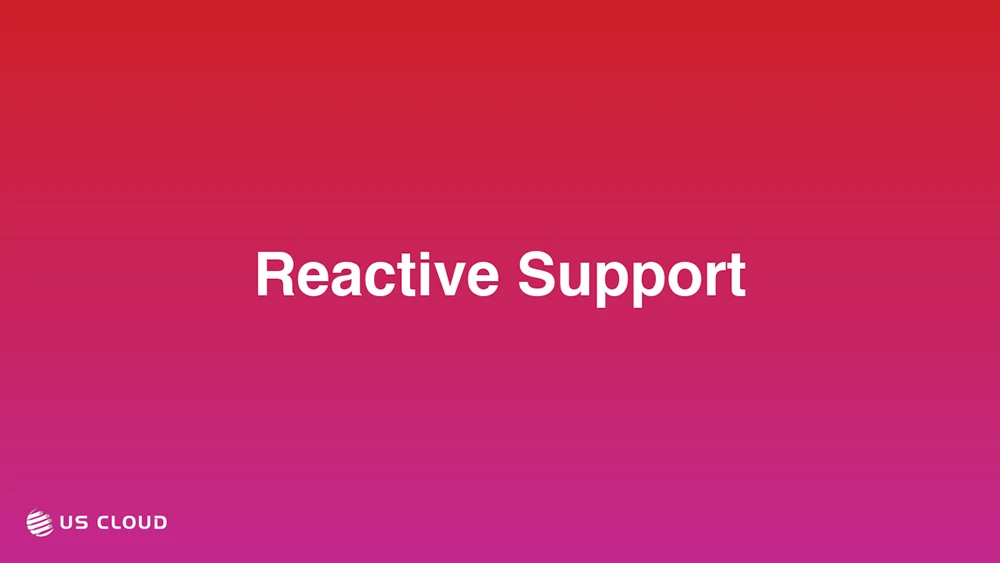Reactive Support.

What is Reactive Support?
Reactive Support is a customer service model provided by Microsoft that focuses on addressing specific issues or incidents reported by customers after they occur. Unlike proactive support, which aims to prevent problems before they arise, reactive support deals with existing issues to restore normal operations. This model is crucial for minimizing downtime and ensuring the smooth functioning of Microsoft environments when unforeseen problems arise.
Key Features of Reactive Support:
- Problem Resolution: Involves thorough troubleshooting and diagnosis of issues.
- Effective Solutions: Provides solutions or workarounds to resolve the problem.
- Multiple Channels: Available through phone, email, or online support portals.
- Varied Response Times: The speed and level of support depend on the customer’s specific support plan and the severity of the issue.
Reactive support is essential for businesses relying on Microsoft products, as it helps maintain productivity by quickly addressing unexpected technical challenges.
The Role of Reactive Support in Microsoft Environments
Reactive support plays a pivotal role in maintaining the operational integrity of Microsoft environments. When unexpected issues arise, this support model ensures that problems are addressed promptly to minimize disruptions.
Importance in Business Operations:
- Minimizing Downtime: Quick resolution of issues helps maintain business continuity.
- Ensuring Productivity: By resolving technical problems efficiently, reactive support helps keep employees productive.
- Customer Satisfaction: Timely assistance enhances customer satisfaction and trust in Microsoft’s services.
In complex IT environments, where multiple systems and applications are interconnected, reactive support acts as a safety net, providing assurance that help is available when needed.
Channels and Access to Reactive Support
Microsoft provides reactive support through various channels, making it accessible to users worldwide. Customers can choose the most convenient method based on their preferences and the urgency of their issues.
Support Channels:
- Phone Support: Direct communication with Microsoft experts for immediate assistance.
- Email Support: Suitable for non-urgent issues where detailed explanations are necessary.
- Online Portals: Self-service options for opening and managing support requests.
Access Considerations:
- Support Plans: The level of access and response time may vary depending on the customer’s support plan.
- Severity Levels: Issues are prioritized based on their severity, ensuring critical problems receive prompt attention.
These channels ensure that customers have multiple options for seeking help, enhancing the overall effectiveness of reactive support.
Benefits and Limitations of Reactive Support
While reactive support offers numerous benefits, it also has certain limitations that businesses should be aware of when relying on this service model.
Benefits:
- Expert Assistance: Access to trained professionals who can diagnose and resolve complex issues.
- Flexibility: Available at any time, including outside normal working hours for critical issues.
- Cost-Effectiveness: Only pay for support when issues arise, rather than maintaining a continuous service.
Limitations:
- Reactive Nature: Does not prevent issues from occurring; only addresses them after they happen.
- Potential Delays: Response times may vary based on the severity and complexity of the issue.
- Dependency on Support Plans: The quality and speed of service can depend heavily on the customer’s chosen support plan.
Understanding these aspects helps businesses make informed decisions about integrating reactive support into their IT strategy.
Conclusion
Reactive Support is a vital component of Microsoft’s customer service offerings, designed to address specific incidents as they occur. By providing expert assistance through various channels, it ensures that businesses can quickly resolve unexpected technical challenges. While it offers flexibility and cost-effectiveness, it is important for organizations to balance reactive support with proactive measures to prevent recurring issues. Ultimately, reactive support serves as an essential tool for maintaining operational continuity in dynamic IT environments.
